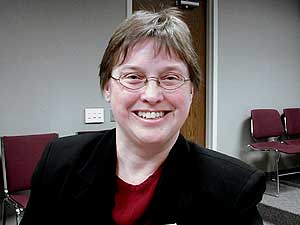|
Photos
Resources
Your Voice
|
Minnesota highway deaths up in 2002
January 3, 2003
Youth, alcohol and mild winter weather are factors contributing to a sharply higher number of road deaths in Minnesota in 2002. Minnesota safety officials say there's an 18 percent increase in the state's traffic crash fatalities compared to the year before. A surprising finding is most of the fatalities occured on Minnesota's rural roads during daytime hours.
St. Paul, Minn. — Inexperience, booze and a sense of invincibility take a heavy toll among youthful drivers.
"The highest number of fatalities is always among the 15-24-year-old age group. We are in fact killing our youth," says Kathy Swanson, director of the Office of Traffic Safety for the Minnesota Department of Public Safety.
Swanson says 614 people are dead from traffic crashes last year. That number, she says, will likely rise to 670 when reports from all the state's counties are in.
Swanson says about 35 percent to 40 percent of the crash victims were drinking before driving, and two-thirds of the victims were not wearing seat belts.
"It's young men, it's people who don't have their seat belts on, it's people who are driving too fast for conditions and who are intoxicated behind the wheel," Swanson says.
Minnesota lawmakers last session rejected lowering the legal blood alcohol limit from .10 to .08. Gov.-elect Tim Pawlenty says he supports the lower rate but won't push it. Republicans, with support from Democrats, are expected to introduce another version of the .08 bill this session.
Swanson says most of Minnesota's 2002 traffic fatalities did not occur on busy urban and suburban roadways.
"The fatalities are happening in a pattern that may surprise a lot of people, because they're happening in the rural areas, not where there is a lot of traffic. They're happening in beautiful weather, and happening on days that you really wouldn't expect to find yourself in a fatal crash," Swanson says.
The mild winter weather, she says, brings more drivers out onto the roads and causes them to drive faster.
"When the roads are dry and the sky is clear, people drive like they don't have a care in the world, and people just simply can't drive that way and expect to be crash free," Swanson said.
Fatalities last year on Minnesota roads for motorcyclists and pedestrians were unchanged - about 50 in either category, Swanson says.
While the rise in Minnesota's traffic fatalities last year is tragic, the bigger picture offers hope. Kathy Swanson has been analyzing state road crash statistics since l978. Overall, there's been a sharp decline in Minnesota's rate of road deaths.
"We have seen the fatality rate drop from over five fatalities per 100 million vehicle miles travelled, back when I started in the field, to around one fatality per 100 million vehicle miles," Swanson said.
Swanson says one way to reduce traffic fatalities is through better traffic law enforcement. She says Minnesotans are driving 80 percent more miles than 20 years ago, but the number of state troopers on the road is unchanged.
"If you can drive from here to Duluth and not see a trooper, and not see a law enforcement officer, your tendency to not mind the speed limit as closely is just increased," Swanson said.
Finally, there's the cell phone factor. Kathy Swanson says taken alone, drivers using cell phones do not appear to be a major factor in traffic crashes, thus traffic fatalities.
However, Swanson says a category called driver distraction including cell phone use, applying makeup, eating, reading, disciplining the kids in the back seat are all factors in about one-quarter of the state's road deaths.
|
News Headlines
|
Related Subjects
|

